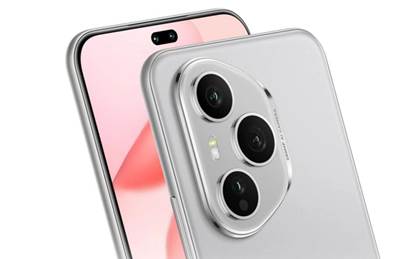Your phone overheating
can be frustrating and concerning. Overheating affects performance and could
damage your device long-term. Understanding the causes helps in preventing
potential damage. Whether it’s due to using your device in the sun or running too
many power-hungry apps, identifying the triggers is crucial. The good news is
that there are practical solutions to manage and reduce overheating. For
instance, newer models like the HONOR 400 pro are designed with
advanced cooling technology to handle intensive tasks more efficiently. Learn
to protect your smartphone’s health with simple fixes and preventive measures.
Avoid disruptions in your digital life with these insights to improve your phone’s
performance and longevity.

Common Causes of Phone Overheating
Intensive App Usage and Multitasking
High-intensity
apps such as games and video editors demand excessive processing power. The
phone’s CPU gets overloaded, leading to increased heat. Multitasking
exacerbates this issue as it makes the processor work harder to manage multiple
processes simultaneously. Users should be mindful of app demands on the device,
closing those not in use to prevent CPU overworking.
Environmental
Factors
External
temperatures significantly affect phones. Using your phone under direct
sunlight or in hot environments raises the internal temperature quickly.
Devices struggle to cool down due to the environment’s heat, risking
overheating. Maintaining usage in moderate conditions helps reduce external
thermal influence. Leaving phones in cars during hot weather also contributes
to this problem, as closed spaces can heat up rapidly.
Charging
Habits
Charging
generates heat, and incorrect habits elevate that heat drastically. Using
bad-quality chargers or charging in hot environments contributes to
overheating. Continuously playing games or watching videos while charging
stresses the battery. It’s vital to adopt proper charging practices to mitigate
this risk. Unplugging once fully charged or using the phone less during
charging reduces unnecessary heat generation.
Immediate Solutions to Cool Down
Your Phone
Close
Unnecessary Apps
Apps running in the background use memory and CPU
power, causing your phone to heat up. Closing these apps reduces resource
usage, helping to lower the temperature quickly. Regularly checking for and
shutting down unused apps prevents overheating, improves performance, and
extends battery life. It’s a simple habit that keeps your device cool,
efficient, and responsive.
Remove
Phone Case
Cases—especially heavy, thick, or poorly ventilated
ones—can trap heat and prevent your device from cooling properly. By removing
the case, you allow heat to escape more efficiently into the surrounding air,
which can significantly reduce internal temperatures. If overheating is a
recurring issue, opt for cases specifically designed to enhance airflow and
support heat dissipation.
Move
to a Cooler Environment
If your phone overheats, moving it
to a cooler environment can help stabilize its internal temperature.
Air-conditioned rooms are ideal, as they maintain a consistent and cool
atmosphere. Avoid placing your phone in direct sunlight, near windows, or on hot
surfaces. These precautions give your phone the best chance to cool down
efficiently and prevent long-term damage.
Preventive Measures to Avoid
Overheating
Update
Software Regularly
Software updates often bring
performance enhancements, security patches, and bug fixes that significantly
improve your phone’s efficiency and stability. Keeping your device up to date
minimizes system glitches, reduces the risk of overheating, and ensures
smoother operation. To maintain peak performance, enable automatic updates or
manually check for them regularly—this keeps your phone’s firmware current and
running flawlessly.

Optimize
Settings
Reducing screen brightness and disabling unnecessary
background features significantly minimize resource strain on your device.
Lowering brightness cuts down power consumption for the display, while turning
off unused functions like Bluetooth, GPS, or auto-sync reduces processor load.
Together, these adjustments help conserve battery life and lower internal
temperatures, indirectly reducing the risk of overheating and enhancing device
performance and longevity.
Use
Certified Accessories
Using manufacturer-recommended or
certified third-party accessories—such as chargers and cables—ensures both
compatibility and compliance with safety standards. These certified products
are designed to optimize power flow, minimize energy loss, and prevent overheating
due to irregular electric input. In contrast, cheap or uncertified accessories
may compromise your device’s performance and pose serious risks, including fire
hazards, short circuits, or battery damage.
When
to Seek Professional Help
Sometimes, overheating persists
despite attempts to mitigate it. If issues continue, it might signify deeper
hardware problems requiring professional evaluation. Repeated episodes can
damage internal components, necessitating expert diagnosis. Visit a certified
service provider if signs such as battery bulging or frequent shutdowns occur.
They possess the tools and knowledge to identify and resolve complex issues
your device might be facing, prolonging its life.
Conclusion
Regular
vigilance helps in mitigating overheating, protecting your phone from potential
damage. Simple actions like proper app management, adherence to software
updates, and using the right accessories enhance your phone’s safety. By
implementing immediate solutions like closing apps or moving to cooler
environments, you manage overheating swiftly. When in doubt, professional help
saves from further damage. Invest time in preventive measures to ensure your
device runs smoothly and efficiently, avoiding the pitfalls of overheating.



